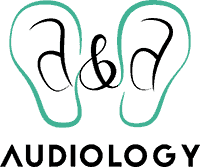- The Connection Between Hearing Loss and Dementia - July 30, 2024
- The Advantages of Rechargeable Hearing Aids - July 16, 2024
- How to Enjoy Music Festivals While Protecting Your Hearing - July 3, 2024
Living in a world alongside a thirty-year old Americans with Disabilities Act (ADA) means that many of us have become accustomed to guaranteed rights within the workplace. At the time of its signing, the ADA introduced radical protections for people with disabilities and gave millions financial autonomy, revolutionizing the way people with disabilities were able to define their professional worth.
What is the ADA?
We cannot consider the ADA without the decades of work from advocates and activists that preceded its signing in 1990. Previously, people with disabilities were often hidden away from mainstream society, excluded from daily scenarios like school rooms, workplaces, community spaces and even religious congregations.
It wasn’t until 1975, with the passing of a law that gave children with disabilities access to public education, that parents felt able to keep disabled children at home. Previously, people with disabilities were placed in institutions. As the movement to remove the barrier between mainstream culture and disabled people grew, activists and regular folks alike began using tactics from the Civil Rights Movement of the 1960s.
By 1990, with bipartisan support, the current ADA was signed into law. Modeled after the Civil Rights Act of 1964 (which made discrimination on the basis of race, color, religion, sex or national origin illegal), the ADA prohibited discrimination against people with disabilities throughout public life. As of that moment, workplaces, schools, transportation, communications and both public and private spaces that are open to the public were required to extend equal opportunities for all.
General protections
The ADA is broken up into five sections:
- Employment
Provides protections for people with disabilities to receive the same employment opportunities as non-disabled people.
- State and Local Government
Extends equal rights in all programs, activities, and services of public entities. This includes public transportation, architecture and communication processes.
- Public Accomodations
Requires privately-owned establishments that are open to the public to provide accessible accommodations for people with disabilities. This includes places like restaurants, private schools, health clubs, movie theaters and retail establishments. The territory here is expansive and covers many more types of businesses. It also requires owners to make reasonable upgrades to remove barriers and include access in communications.
- Telecommunications
To provide telephone and internet services that are accessible to all.
- Miscellaneous Provisions
This section includes the relationship of the ADA to other laws, prevents retaliation, and discusses the impact on insurance companies, among other provisions.
Workplace protections
The workplace protections covered by the ADA are revolutionary in that they provide people with disabilities the opportunity to experience financial freedom, which amounts to independence for many.
Places of work with more than fifteen employees must abide by the ADA in providing reasonable accommodations to staff with disabilities. They must not discriminate in the hiring and firing processes based upon disability. This arm of the ADA is regulated and enforced by the U.S. Equal Employment Opportunity Commission.
What does the ADA mean for people with hearing loss in the workplace?
All people with hearing loss are protected in the workplace as part of the ADA. This applies even if your hearing aids or cochlear implant helps to bring your hearing close to ‘normal.’ Your ability to hear should not impact hiring decisions, nor can hearing loss be constituted as reason for dismissal.
Within the workplace, your employer is required to provide reasonable accommodations. This could include closed captioning in Zoom meetings or at company-wide educational sessions. You might also opt out of telephone meetings and choose face-to-face or written communications as preferred methods of communication. When you encounter obstacles to your work, you can ask for accommodations that help to alleviate the burden of hearing loss in your work life.
If you feel as though your hearing loss has been used as a determining factor in hiring and firing events or if you weren’t able to secure reasonable accommodations for your hearing loss, you can make a report at ADA.gov.
The future of the ADA
In 2009, a number of amendments were added to the ADA primarily enlarging the scope of what qualifies as a disability. Now, we sit on the precipice of a movement to further expand the ADA. When the ADA was initially written, the internet was a twinkle in our collective eye. Now, advocates are pushing to have websites and apps qualify as public spaces that require oversight in order to be accessible for all people with disabilities.
We can see examples of why this might be important in relation to workspaces as more and more entities choose to employ remote workers. Lawsuits against video conferencing options and apps like Slack or Asana (which enable remote team project work) are paving the way for future expansion of the ADA into Silicon Valley.

